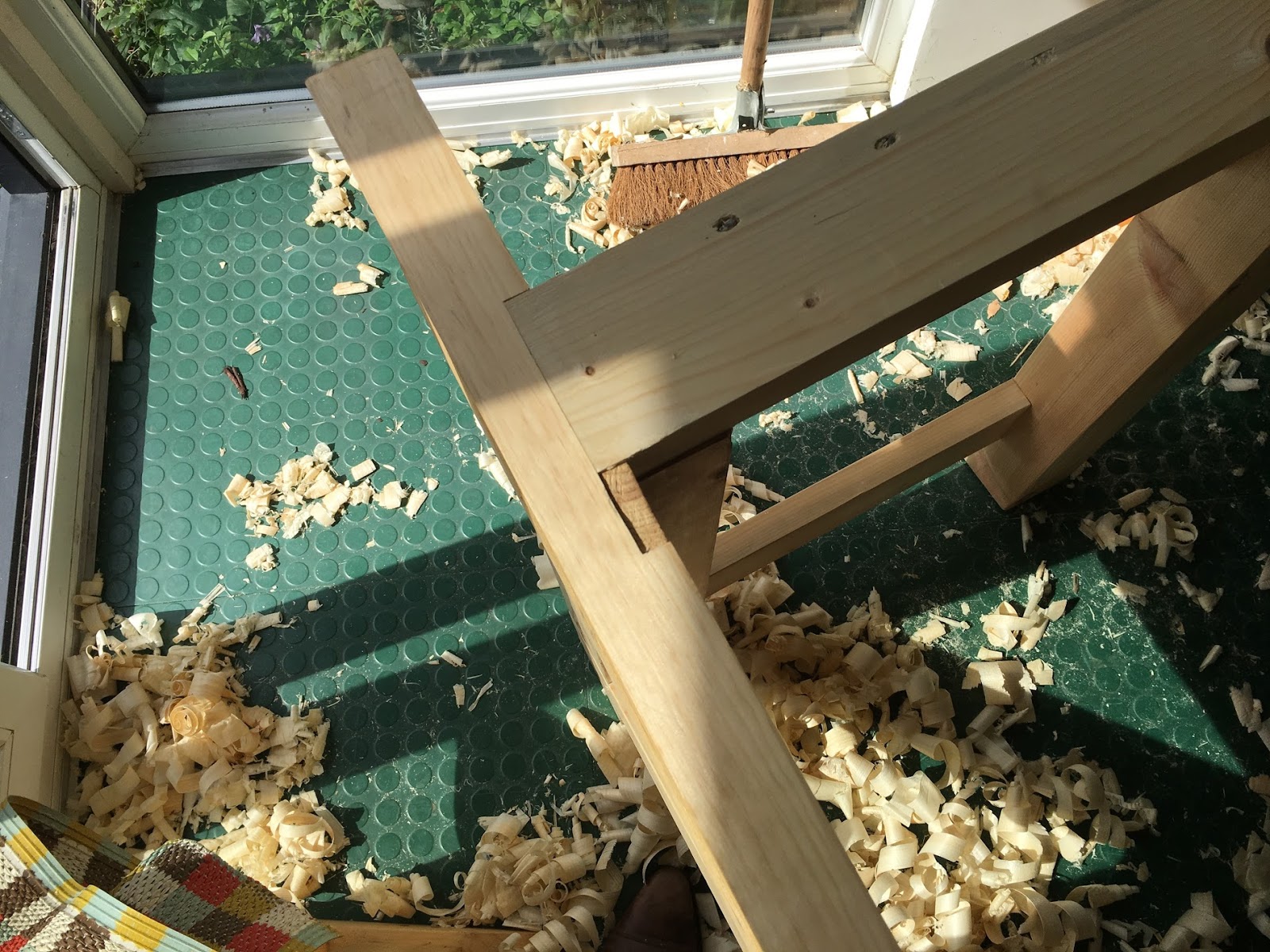Preparing for the top simply involves getting all the parts that receive the top planks flat and level.
Here is the bench glued and nailed up:

Getting things flat and level means using a plane – or in my case several.
Over the past couple of years I have bought and refurbished a number of old planes including a no5 (aka a jack plane) and no 7 (a jointer) which ought to be a good combination for this type of job and I made sure the irons were very sharp. Having two planes (or two blades sharpened to different cambers) is handy as you can switch between them as you alternate between removing lots of material and flattening the surface.
Having said that, you do not need lots of planes – Paul Sellars does all of his benches using a small (number 4) plane, but if you have a longer plane it is a bit easier.
As a comparison a no 4 planes is just under 10” long whereas a no 7 is a whopping 22”. You can read more about bench planes here.
The first step is to bring the aprons down in line with the top of the leg assemblies – ideally you should undercut the inside edge slightly so that when the top goes on it makes a tight fit. Using the jack plane to get the bulk of was uneventful (and quick). After I clattered the inside of the bench with the back of the no 7 for the fifth time it occurred to me that flailing around like a mad gibbon was probably not the required approach – I slowed down and things improved markedly.
I still managed to drag out a job that took Mr R Maquire 10 mins to around an hour (and his bench is more than twice the length of mine!)
I do not have a long straight edge so tried to do it all by eye, which is what RM encourages – we will have to wait until the top goes on to see if there are any unsightly gaps between the top and the apron.
Next you fit the bearers, the housings for which were measured to the top of the unflattened apron tops, and thus need planing down too. This was a bit more efficient, partly because they are short, but also because I realised you can get much closer to the finish point with the jack plane than I had first thought, and this means the amount of finessing is much reduced.
On inspecting my work thus far, I think it is best described as erratic – for instance, if I look at the way the aprons and legs are joined at the front of the bench, I think it is not a bad effort, if I say so myself. Then towards the back there is a horror of a gap – admittedly I did all my first attempts at new techniques on this end as it will be furthest away from me when I use the bench (a dubious strategy with hindsight, as all your major first-attempt errors end up in one place!) and actually it is not quite as bad as it looks – the leg is a tight fit, I just did a sloppy job cutting the top bearer.

